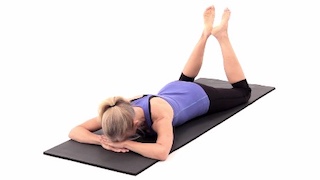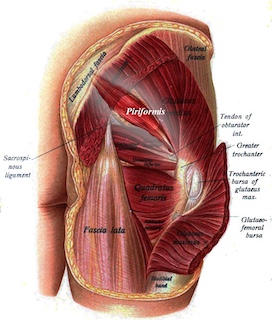Piriformis
The piriformis muscle is a flat, band-like muscle located in the buttocks near the top of the hip joint. This muscle is important in lower body movement because it stabilizes the hip joint and lifts and rotates the thigh away from the body. This enables us to walk, shift our weight from one foot to another, and maintain balance.
It is also used in sports that involve lifting and rotating the thighs – in short, in almost every motion of the hips and legs.
Piriformis
Anatomy
[Origin]
- Anterior surface of sacrum
- Sacrotuberous Ligament
[Insertion]
- Superior border of greater trochanter of femur
[Action]
- Laterally rotate extended thigh and abduct flexed thigh
- Steady femoral head in acetabulum
Clinical Relevance
Piriformis Syndrome
Piriformis syndrome can cause pain in the buttocks due to compression of the sciatic nerve by the piriformis muscle. People who engage in sports that involve frequent use of the gluteal muscles, such as ice skaters, cyclists, and rock climbers, as well as women, are more prone to developing this syndrome. Approximately 50% of cases are associated with a history of buttocks trauma, which leads to hypertrophy and spasm of the piriformis muscle.
Additionally, about 12% of individuals have the fibular division of the sciatic nerve passing through the piriformis muscle.
~ Evidence-Based Exercises ~
According to an EMG study, the exercises that demonstrated significant muscle contractions of Piriformis are;
- Single-Leg Bridge
- Prone Heel Squeeze
- External Rotation and Abduction with Hip in slight Extension
Single-Leg Bridge

Prone Heel Squeeze

Hip ER/Abd/Ext

< Reference >
- Keith L. Moore, Anne M. R. Agur, Arthur F. Dalley. Moore Clinically Oriented Anatomy 7th Edition, Lippincott Williams & Wilkins, 2013
- Giphart JE, Stull JD, LaPrade RF, Wahoff MS, Philippon MJ. Recruitment and Activity of the Pectineus and Piriformis Muscles During Hip Rehabilitation Exercises: An Electromyography Study. Am J Sports Med. 2012;40(7):1654-1663.


